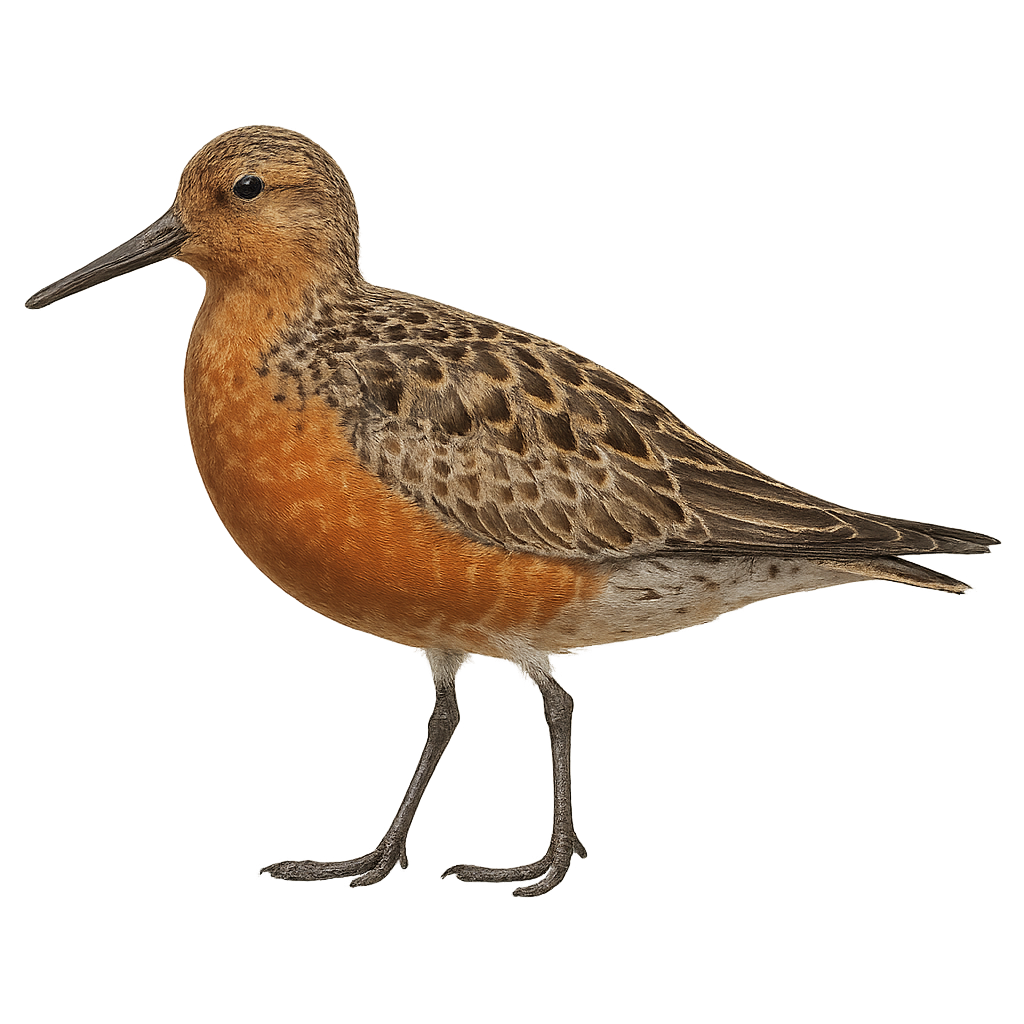Your wildlife photography guide.
Explore the red knot in detail, study its behavior, prepare your shots.
Where to observe and photograph the red knot in the wild
Learn where and when to spot the red knot in the wild, how to identify the species based on distinctive features, and what natural environments it inhabits. The WildlifePhotographer app offers tailored photography tips that reflect the red knot’s behavior, helping you capture better wildlife images. Explore the full species profile for key information including description, habitat, active periods, and approach techniques.
Red Knot
Scientific name: Calidris canutus

IUCN Status: Near Threatened
Family: SCOLPACIDAE
Group: Birds
Sensitivity to human approach: Shy
Minimum approach distance: 30 m
Courtship display: May to June
Incubation: 20-22 jours
Hatchings: May to July
Habitat:
Mudflats, beaches, coastal marshes
Activity period :
Primarily active during the day, with peak activity in the morning and late afternoon.
Identification and description:
The Red Knot, or Calidris canutus, is a remarkable migratory bird belonging to the Scolopacidae family. Known for its impressive migrations, it travels thousands of kilometers between its Arctic breeding grounds and its southern hemisphere wintering areas. This medium-sized bird features a distinctive reddish breeding plumage, which becomes duller in winter. It primarily feeds on mollusks, crustaceans, and insects found in mudflats and beaches. The Red Knot plays a crucial role in coastal ecosystems, helping regulate prey populations. Its survival is threatened by habitat loss and climate change, making it a species of conservation concern.
Recommended lens:
400 mm – adjust based on distance, desired framing (portrait or habitat), and approach conditions.
Photography tips:
To photograph the Red Knot, focus on low tides in mudflats where it feeds. Use a telephoto lens of at least 400mm to capture detailed images without disturbing the bird. Be patient and discreet, camouflaging yourself if possible to blend into the environment. Opt for the golden hours of morning or evening for soft, flattering light. Observe the bird's behaviors, especially during feeding, to capture unique moments.
The WildlifePhotographer App is coming soon!
Be the first to explore the best nature spots, track rutting seasons, log your observations, and observe more wildlife.
Already 1 429 wildlife lovers subscribed worldwide

